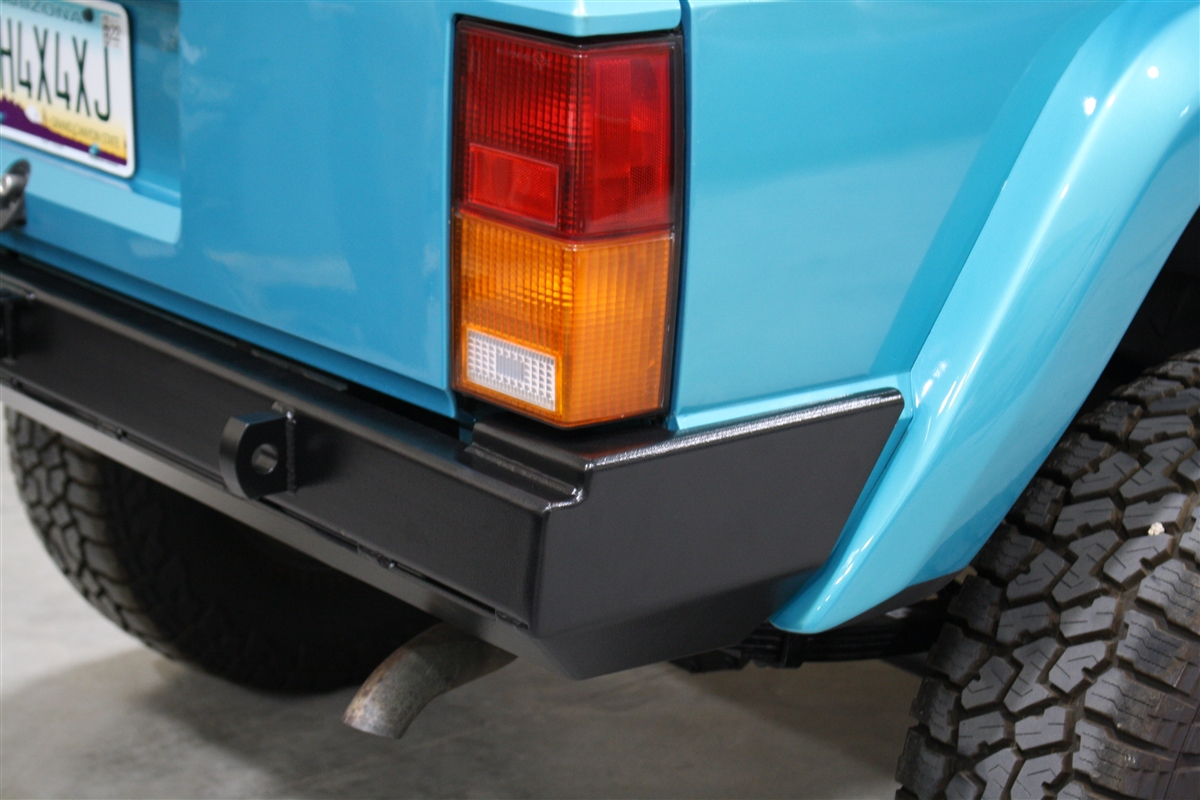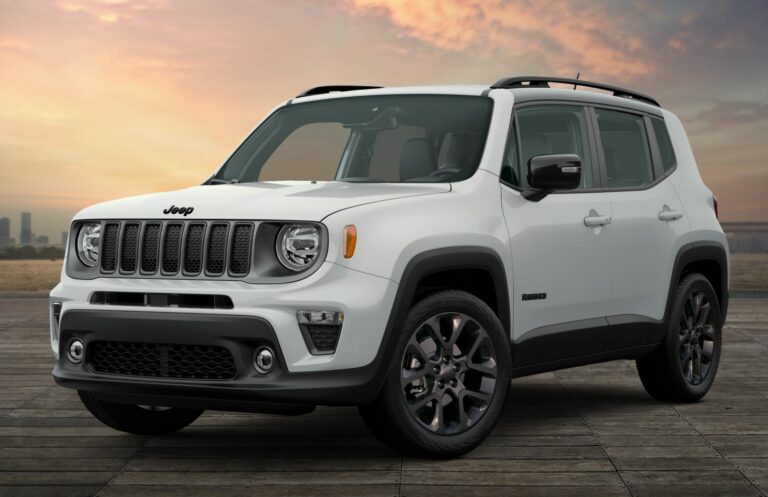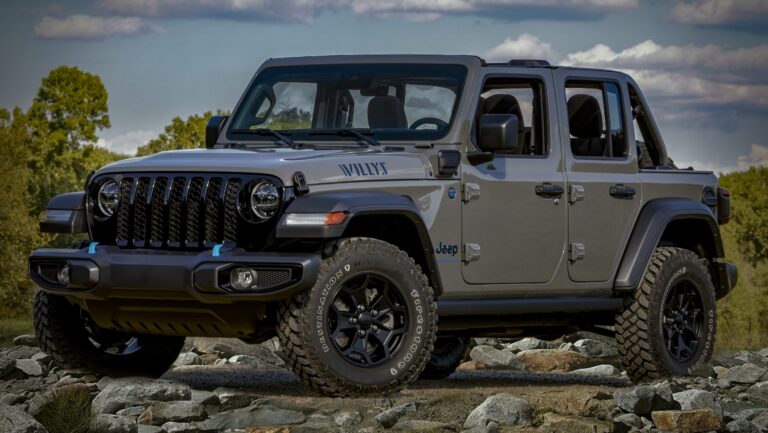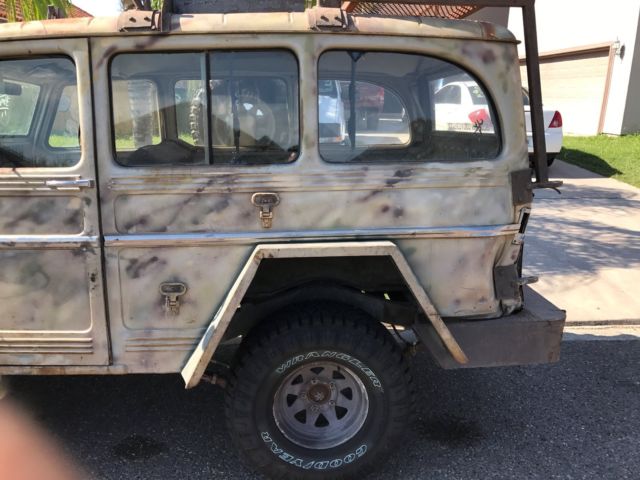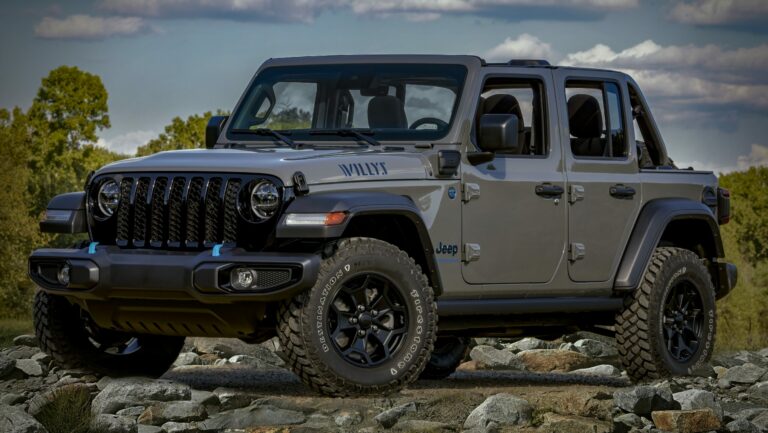Jeep Cherokee XJ Rear Bumper: The Ultimate Guide to Protection, Utility, and Style
Jeep Cherokee XJ Rear Bumper: The Ultimate Guide to Protection, Utility, and Style jeeps.truckstrend.com
The Jeep Cherokee XJ, produced from 1984 to 2001, holds a legendary status among off-road enthusiasts and daily drivers alike. Known for its unibody construction, robust powertrain, and timeless design, the XJ remains a highly sought-after vehicle for modification and adventure. While the factory XJ is capable, its stock components, particularly the rear bumper, often leave much to be desired in terms of protection, utility, and modern aesthetics.
An aftermarket Jeep Cherokee XJ Rear Bumper is far more than just a cosmetic upgrade. It’s a critical component that enhances the vehicle’s durability, expands its functionality, and significantly improves its off-road prowess. Whether you’re navigating challenging trails, needing a secure place for a larger spare tire, or simply wanting to give your beloved XJ a more aggressive and capable look, upgrading the rear bumper is one of the most impactful modifications you can make. This comprehensive guide will delve into every aspect of the XJ rear bumper, from its various types and benefits to installation tips and crucial considerations, helping you make an informed decision for your classic Jeep.
Jeep Cherokee XJ Rear Bumper: The Ultimate Guide to Protection, Utility, and Style
Understanding the Stock XJ Rear Bumper and Why It Falls Short
The original factory rear bumper on the Jeep Cherokee XJ was designed primarily for basic street use and minimal impact protection. Constructed from relatively thin gauge steel or even plastic components on later models, it offers very limited defense against impacts, especially off-road. Its design also contributes to a poor departure angle, making it prone to snagging on obstacles during trail navigation. Furthermore, the stock bumper typically provides no integrated recovery points, and the factory spare tire location (inside the cargo area or under the vehicle) becomes problematic when upgrading to larger tires, which is a common modification for XJ owners. These limitations are precisely why upgrading to an aftermarket Jeep Cherokee XJ Rear Bumper is almost a rite of passage for serious XJ owners.
Why Upgrade Your XJ Rear Bumper? Benefits and Functionality
Investing in an aftermarket Jeep Cherokee XJ Rear Bumper offers a multitude of tangible benefits that extend far beyond mere aesthetics:
- Enhanced Protection: The primary benefit of an upgraded bumper is superior protection. Constructed from heavy-gauge steel (typically 3/16" or 1/4" thick), these bumpers are designed to withstand significant impacts from rocks, trees, and other vehicles. This safeguards your XJ’s rear quarter panels, tailgate, and chassis during off-road excursions or even minor fender benders.
- Improved Off-Road Capability: Factory bumpers often hang low, reducing the departure angle and causing the vehicle to "high-center" or scrape. Aftermarket bumpers are typically designed with a higher clearance and tighter fit to the body, significantly improving the departure angle and allowing your XJ to clear obstacles more effectively.
- Increased Utility and Storage: This is where aftermarket bumpers truly shine. Many models integrate features such as:

- Integrated Hitch Receivers: Stronger and often rated for higher towing capacities than factory hitches.
- Swing-Out Tire Carriers: Essential for carrying oversized spare tires (31 inches and up) that no longer fit in the stock location. This frees up crucial cargo space inside and protects the spare from damage.
- Recovery Points: Welded D-ring shackle mounts are vital for safe vehicle recovery, whether pulling yourself out of a sticky situation or assisting others.
- Accessory Mounts: Built-in provisions for jerry cans (fuel/water), high-lift jacks, shovels, axes, and even auxiliary LED lighting.

- Durability and Longevity: Aftermarket bumpers are built to last. They typically feature robust construction, high-quality welds, and durable powder-coat finishes that resist rust, corrosion, and UV damage, ensuring they stand up to the elements and the rigors of off-roading for years to come.
- Aesthetics and Customization: A well-designed aftermarket bumper instantly transforms the look of your XJ, giving it a more aggressive, capable, and personalized appearance that reflects its adventurous spirit.
Types of Aftermarket XJ Rear Bumpers

The market for Jeep Cherokee XJ Rear Bumper options is diverse, catering to different needs, budgets, and styles. Understanding the common categories will help you narrow down your choice:
- Basic / Minimalist Bumpers: These are typically stronger and more durable than stock, offering improved departure angles and often integrated recovery points. They are a good choice for those who want enhanced protection without the added weight and features of more elaborate designs. They usually replace the factory bumper directly.
- Heavy-Duty Bumpers with Integrated Hitch: A step up from basic designs, these bumpers incorporate a robust hitch receiver (often Class III or IV rated) directly into their structure. This provides a stronger and cleaner towing solution than bolt-on hitches.
- Bumpers with Swing-Out Tire Carriers: Arguably the most popular type, these bumpers feature a hinged arm that swings out to carry an oversized spare tire. This is crucial for anyone running larger tires, as it frees up cargo space and protects the tire. Many tire carriers also include mounts for jerry cans, high-lift jacks, and other accessories. They can be single swing-out (tire only) or dual swing-out (tire on one side, jerry cans/accessories on the other).
- Full Utility / Expedition Bumpers: These are comprehensive solutions that combine the best features of all types. They typically include an integrated hitch, a robust tire carrier, multiple accessory mounts (jerry cans, high-lift, shovel), and sometimes even integrated LED light cutouts. These are designed for serious off-roaders and overlanders who need maximum utility.
- Custom Fabricated Bumpers: For those with unique requirements or a specific vision, custom fabrication shops can build a bespoke bumper. While more expensive, this allows for unparalleled personalization and integration of specific features.
Material Considerations: Most aftermarket XJ bumpers are made from steel (various thicknesses like 3/16" or 1/4"). Some manufacturers offer aluminum options, which are significantly lighter, reducing overall vehicle weight and improving fuel economy. However, aluminum bumpers are typically more expensive and may not offer the same ultimate strength for heavy impacts as steel.
Key Features to Look for in an XJ Rear Bumper
When selecting your new Jeep Cherokee XJ Rear Bumper, pay close attention to these critical features:
- Recovery Points: Ensure the bumper has robust, welded-through D-ring shackle mounts. These are non-negotiable for off-road safety.
- Hitch Receiver: If you tow, verify the hitch receiver’s class rating (e.g., Class III for 5,000 lbs GTW / 500 lbs tongue weight) and that it’s integrated directly into the bumper’s frame mounts for maximum strength.
- Tire Carrier Design (if applicable):
- Latch Mechanism: Look for a heavy-duty, secure latch that prevents rattling and accidental opening.
- Hinge Design: Robust, greasable hinges are essential for smooth operation and longevity, especially with heavy tires.
- Adjustability: Can it accommodate different tire widths and diameters? Does it include an anti-wobble mechanism to keep the tire snug?
- License Plate Relocation: If the tire blocks the factory license plate, ensure the bumper includes a relocation bracket and often a light for legality.
- Accessory Mounts: Consider where you’ll mount your high-lift jack, jerry cans, or auxiliary lights. Many bumpers offer pre-drilled holes or integrated tabs.
- Construction and Finish: Inspect the welds for quality and consistency. A durable powder-coat finish is crucial for rust prevention and aesthetics. Some manufacturers offer bare steel for custom painting.
- Fitment: Most reputable brands design their bumpers for direct bolt-on installation using existing frame mounting points, minimizing modifications.
Installation Guide: Replacing Your XJ Rear Bumper
Installing a Jeep Cherokee XJ Rear Bumper is a manageable DIY project for someone with basic mechanical skills, but it’s a two-person job due to the weight.
Tools Required:
- Socket wrench set (metric and/or standard, depending on bolt heads)
- Combination wrenches
- Breaker bar (for stubborn bolts)
- Penetrating oil (e.g., PB Blaster, WD-40)
- Grinder or cutting tool (if bolts are severely seized)
- Jack stands
- Floor jack (optional, for lifting new bumper into place)
- Wire brush or angle grinder with wire wheel (for cleaning frame)
- Rust preventative primer/paint
- Torque wrench
Safety First:
- Always work on a level surface.
- Set the parking brake.
- Block the wheels.
- Wear safety glasses and gloves.
- Disconnect the battery if doing any wiring.
Steps:
- Preparation: Spray all existing bumper mounting bolts with penetrating oil several hours or even the day before.
- Remove Stock Bumper:
- Locate the bolts securing the factory bumper to the frame rails. These are typically on the inside of the frame rails, behind the bumper.
- If equipped, disconnect any license plate lights or trailer wiring.
- Carefully unbolt and remove the old bumper. It might be heavy, so have a helper ready.
- Inspect the frame rails for rust or damage. Clean any rust with a wire brush or grinder and apply rust preventative paint.
- Position New Bumper: With a helper, carefully lift the new aftermarket bumper into place, aligning its mounting brackets with the frame holes.
- Install Mounting Hardware:
- Insert the supplied bolts and washers through the bumper brackets and into the frame.
- Loosely tighten all bolts by hand first to ensure proper alignment.
- Once all bolts are in place, begin to tighten them evenly. Refer to the bumper manufacturer’s instructions for specific torque specifications, if provided.
- Install Tire Carrier (if applicable):
- Assemble the swing-out arm and attach it to the bumper’s hinge assembly.
- Install the tire mounting plate and any accessory mounts (jerry can holders, high-lift jack mounts).
- Mount your spare tire and adjust for proper fitment.
- Install the latch mechanism and ensure it operates smoothly and securely.
- If your license plate needs to be relocated, install the relocation bracket and wire up the new license plate light.
- Final Checks:
- Double-check that all bolts are tightened to specification.
- Operate the tire carrier (if applicable) several times to ensure smooth movement and secure latching.
- Test any new lighting or wiring.
- Check for any rattles or loose components.
Tips for a Smooth Installation:
- Have plenty of penetrating oil on hand. XJ frame bolts are notorious for seizing.
- If bolts are seized, try heating them gently with a torch (be careful not to damage fuel lines or wiring) or use a grinder with a cut-off wheel to carefully cut them.
- A floor jack can be invaluable for supporting the heavy new bumper and aligning bolt holes.
- Don’t rush the process. Take your time to ensure everything is aligned and tightened correctly.
Important Considerations Before Purchasing
Before you click "add to cart" on your new Jeep Cherokee XJ Rear Bumper, consider these crucial factors:
- Budget: Aftermarket bumpers range widely in price, from a few hundred dollars for basic models to well over a thousand for full-utility options with tire carriers and accessories. Set a realistic budget.
- Intended Use: Are you a daily driver who occasionally hits light trails, or are you building a serious rock crawler/overlander? Your intended use dictates the level of protection and utility you need.
- Weight Impact: Heavy steel bumpers can add significant weight (100-200+ lbs) to the rear of your XJ. This will affect your suspension, potentially causing sag and impacting ride quality and handling. Be prepared to upgrade your rear leaf springs (e.g., heavy-duty leaf springs or add-a-leaf kits) to compensate.
- Tire Size: If you plan to run larger tires in the future, ensure the tire carrier you choose can accommodate that size.
- Shipping Costs: Due to their size and weight, bumpers often incur substantial freight shipping charges. Factor this into your total cost.
- Local Regulations: Check if your state or local laws have any specific requirements regarding bumper height, license plate visibility, or lighting.
- Brand Reputation and Reviews: Research different brands. Look for customer reviews regarding fitment, durability, customer service, and common issues.
Maintenance and Care for Your XJ Rear Bumper
Once installed, your new Jeep Cherokee XJ Rear Bumper requires minimal but consistent maintenance to ensure its longevity and performance:
- Regular Cleaning: Wash off dirt, mud, salt, and grime, especially after off-road trips.
- Inspect Finish: Periodically check the powder coat for chips or scratches. Touch up any damaged areas with rust-inhibiting paint to prevent corrosion.
- Lubricate Moving Parts: If you have a tire carrier, lubricate the hinge and latch mechanism regularly (e.g., with white lithium grease) to ensure smooth operation and prevent squeaks or binding.
- Check Bolt Tightness: After the first few hundred miles and periodically thereafter, re-check the tightness of all mounting bolts. Vibrations from driving can sometimes cause bolts to loosen.
- Inspect Recovery Points: Ensure D-ring shackles are clean and free of debris.
Challenges and Solutions
While upgrading your Jeep Cherokee XJ Rear Bumper is highly rewarding, you might encounter a few common challenges:
- Challenge: Seized Factory Bumper Bolts.
- Solution: Liberal application of penetrating oil, patience, a breaker bar, and potentially heat or cutting tools if they are completely seized.
- Challenge: Fitment Issues with New Bumper.
- Solution: While rare with reputable brands, minor fitment issues (e.g., bolt holes not perfectly aligning) can sometimes occur. A round file or drill bit can be used to slightly ream out holes if needed. Never force the bumper into place.
- Challenge: Rear Suspension Sag Due to Added Weight.
- Solution: This is very common. Plan to upgrade your rear leaf springs. Heavy-duty leaf springs, add-a-leaf kits, or shackle relocators are popular solutions to restore ride height and carrying capacity.
- Challenge: Rattling Tire Carrier.
- Solution: Ensure the tire is snug against the mounting plate. Many carriers come with adjustable anti-wobble mechanisms. Check the latch for proper adjustment and lubrication. Some owners use rubber shims or silent hitch pins to eliminate play.
Price Table: Representative Costs for Jeep Cherokee XJ Rear Bumpers
Prices for Jeep Cherokee XJ Rear Bumper options vary significantly based on brand, material, features, and complexity. The table below provides a representative price range for common types. These are estimates and do not include shipping costs, which can be substantial.
| Bumper Type | Key Features | Typical Material | Price Range (USD) | Example Brands (Not exhaustive) |
|---|---|---|---|---|
| Basic / Minimalist | Enhanced strength over stock, improved departure angle, often includes recovery points. | Steel (3/16") | $300 – $600 | Rusty’s Off-Road, Detours of Maine, JCR Offroad (basic) |
| Heavy-Duty w/ Integrated Hitch | All basic features, integrated Class III/IV hitch receiver. | Steel (3/16"-1/4") | $500 – $800 | Smittybilt, Rough Country, JCR Offroad, OR-FAB |
| With Swing-Out Tire Carrier | Integrated hitch, recovery points, swing-out arm for oversized spare. | Steel (3/16"-1/4") | $700 – $1,200+ | Smittybilt, JCR Offroad, LOD Offroad, Dirtbound Offroad, CBI Offroad |
| Full Utility / Expedition | Tire carrier, integrated hitch, multiple accessory mounts (jerry cans, high-lift), LED cutouts. | Steel (1/4") / Hybrid | $1,000 – $1,800+ | JCR Offroad, LOD Offroad, Dirtbound Offroad, Custom Fabricators |
| Aluminum Options | Lighter weight, corrosion resistant, similar features to steel counterparts. | Aluminum | $1,200 – $2,500+ | Specific high-end fabricators or niche brands |
Note: Prices are subject to change and vary by retailer, sales, and specific configurations.
Frequently Asked Questions (FAQ) about Jeep Cherokee XJ Rear Bumpers
Q1: Can I install an aftermarket XJ rear bumper myself?
A1: Yes, most aftermarket XJ rear bumpers are designed for bolt-on installation using factory mounting points. However, due to the weight of the bumper, it’s highly recommended to have a second person assist you. Basic hand tools are typically sufficient.
Q2: Will a new rear bumper affect my XJ’s fuel economy?
A2: Yes, adding a heavy steel bumper, especially one with a tire carrier and accessories, will increase the overall weight of your vehicle. This additional weight will generally lead to a slight decrease in fuel economy. Aluminum bumpers are an option to mitigate this.
Q3: Do I need to upgrade my suspension after installing a heavy bumper?
A3: In most cases, yes. A heavy steel rear bumper (100-200+ lbs) will likely cause your XJ’s rear leaf springs to sag, especially if they are already old or worn. Upgrading to heavy-duty leaf springs, an add-a-leaf kit, or shackle relocators is highly recommended to restore proper ride height and prevent premature suspension wear.
Q4: What’s the best material for an XJ rear bumper: steel or aluminum?
A4:
- Steel: More common, generally stronger for heavy impacts, and more affordable. It’s heavier, which can impact suspension and fuel economy.
- Aluminum: Significantly lighter, corrosion-resistant, and can reduce overall vehicle weight. However, it’s typically more expensive and may not withstand extreme impacts as well as heavy-gauge steel. The "best" depends on your priorities (strength vs. weight/cost).
Q5: How do I prevent my tire carrier from rattling?
A5: Most quality tire carriers include an anti-wobble mechanism or adjustable latch. Ensure your tire is securely mounted and snug against the carrier. Regularly check the latch for proper adjustment and lubrication. Some owners use rubber shims or silent hitch pins to eliminate any residual play.
Q6: Will a new bumper interfere with my factory hitch?
A6: Most aftermarket XJ rear bumpers are designed to either integrate a new, stronger hitch receiver or to work around the existing factory hitch (if you choose a basic bumper without an integrated hitch). If you’re buying a bumper with an integrated hitch, it will replace your factory one. Always confirm compatibility with the manufacturer.
Q7: Is a custom-fabricated bumper worth the extra cost?
A7: A custom bumper is worth it if you have very specific needs that off-the-shelf options don’t meet, desire a unique aesthetic, or require integration with other custom modifications. It offers ultimate personalization but comes at a significantly higher cost and longer lead time.
Concluding Summary
The Jeep Cherokee XJ Rear Bumper is far more than just a piece of metal bolted to the back of your vehicle; it’s a statement of capability, a guardian against the elements, and a versatile platform for adventure. From enhancing crucial departure angles and providing robust recovery points to offering integrated solutions for oversized spare tires and essential gear, an upgraded rear bumper transforms your XJ into a more resilient and functional off-road machine.
Choosing the right bumper involves balancing your budget, intended use, and desired features. Whether you opt for a minimalist design for basic protection or a full-utility expedition bumper, the investment will undoubtedly pay dividends in increased confidence, expanded utility, and an undeniably more aggressive and capable appearance for your iconic Jeep Cherokee XJ. Embrace the upgrade, hit the trails, and enjoy the enhanced journey with a rear bumper built to conquer.
